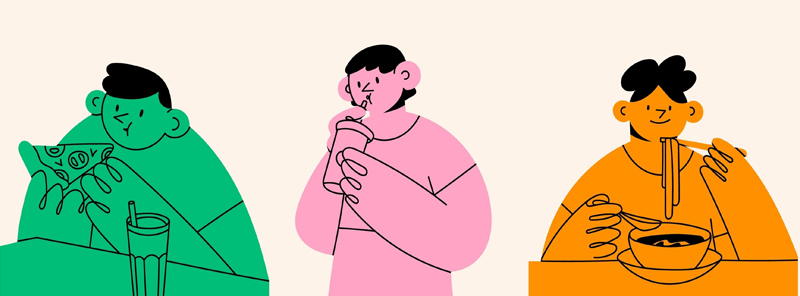

There will always be flatbread.
It was a summer night. After a soul-sapping work meeting, me and a coworker walked our way through the thick evening air in search of food. We passed a Trinidadian/Caribbean restaurant, a neighbourhood institution for over 30 years. I’ve never set foot inside because I knew nothing of the cuisine and dreaded looking silly in the restaurant.
My coworker ushered me in. While my eyes were still adjusting to the florescent lights, she spoke the first word that welcomed me to this space: double. She helped me order and we sat down between walls of tropic beach murals. The double arrived, the richness sipping through the wax paper, full of promise.
With food being my love and comfort language, trying a new cuisine is akin to searching for love outside of familiar surrounding—a leap of faith.
I took a bite.
The lofty bread crouched and sprang back against my teeth, lathering an ever-shifting melange of sweetness, salt, and spices inside my cheeks. My tastebuds relished in this newfound pleasure, taking a moment to realize its complete foreignness, and another to realize the curtain had new been lifted on a new cuisine. With the warm welcome, I began eating the menu on my own. My next order was bustupshut, greeting me in a scrumptious scramble of coils and layers. I eagerly ripped off a piece, using the freshly frayed edges to pick up a generous pinch of curry pumpkin. As my fingers and mouth move to the rhythm of rip, pinch and feed, a memory started to surface. Before I knew it, my tastebuds were calling for the bread to be dipped into a runny yoke with some soy paste. It took a few seconds for my mind to catch up to what my body remembered:
抓餅 (Grab bread).
My ten-year-old self was in Taiwan, dining with my cousins and parents at our usual restaurant. Under florescent lights, grab bread would arrive warm and golden, with flaky layers rising off of its surface, inviting touch. I would gleefully tear off a piece and watch the layers relinquish before being scrunched into my mouth. The joy of this tactile experience continued, with teenage me eating grab bread sprinkled with sesame and green onions at a breakfast stall, or chowing down on its wrapped form with a fried egg and a drizzle of sweet soy paste at a night market. After immigrating to Canada, it was impossible to find fresh grab bread so a frozen version was considered a best compromise. And yet, here I was, far removed from Taiwan, feeling again the joy of ripping glutenous coils over bustupshut.
This restaurant now carries the memory that a small leap of faith on my part was generously rewarded with a new-found connection that beautifully integrated a strand of my pre-and post-immigration life.
When I eat at this restaurant, me and my inner child are both feasting. We are delighted by the florescent lights and the scrumptiousness bread. We are happy to scrunch flaky layers into our cheeks. And we rejoice that despite being much older and further away, we can find similar forms of pleasure in a new language that comforts all the same.
How this connects to therapy:
I have found that the hardship of settling in a new country can make immigrants forget about the comforts of their past and neglect to nurture them in their present. I have come to know that evolving our joy and comfort language is essential to living a truly fulfilling life. More importantly, this evolution does not need to be difficult, for it can be valuable to expand our way of finding comfort in gentle ways, like setting foot into a restaurant with a trusted companion.
If you are in a place in your life where you want more than just stability, but really want to find more ways to nurture your life, know that I have walked a similar path and would love to help you. Unlike the fast and often harsh experience of settling into a new country, this is the kind of learning that can be gentle, fun, and fulfilling. The best part about this is that reconnecting with your comforts can have a radiating effect on your life by bringing more support and strength into all areas. Growing this area of your life doesn’t need to be hard. Even if you’re not sure where to start, I can provide guidance and we can take small steps to help you find out what you miss and search for new ways to honour and practice your comforts in the present.
P.S. If you want to try the food, the restaurant is Ali’s West Indian Roti Shop in Toronto, celebrating its 47th year at the time of this entry. I re-visited it again recently and ate very happily.
